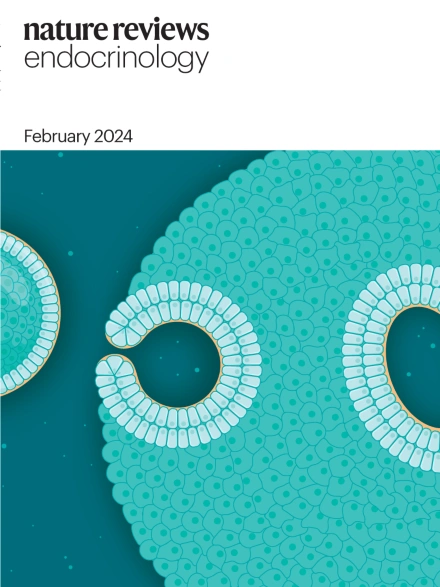Advances in the management of hyperglycaemia and diabetes mellitus during hospitalization.
IF 40
1区 医学
Q1 ENDOCRINOLOGY & METABOLISM
引用次数: 0
Abstract
Diabetes mellitus, which affects over 537 million people worldwide, considerably increases the risk of emergency room visits and admissions to hospital. Inpatient hyperglycaemia in patients with or without diabetes mellitus is associated with higher rates of complications, extended hospital stays and increased mortality when compared with patients with normoglycaemia. The American Diabetes Association recommends a target range of 5.6-10.0 mmol/l (100-180 mg/dl) for levels of glucose in the blood of patients in intensive care units (ICUs), as well as in general medicine and surgery. Insulin therapy remains the cornerstone of managing inpatient hyperglycaemia, with intravenous insulin preferred in ICU and basal-bolus regimens favoured in non-ICU settings. While bedside capillary blood glucose monitoring is standard for adjusting insulin doses, continuous glucose monitoring provides a more comprehensive glycaemic assessment and enhances the prevention of hypoglycaemia in high-risk hospitalized patients. This Review outlines the latest evidence in managing diabetes mellitus and hyperglycaemia within hospitals.住院期间高血糖和糖尿病的处理进展。
糖尿病影响着全世界超过5.37亿人,它大大增加了急诊室就诊和住院的风险。与血糖正常的患者相比,伴有或不伴有糖尿病的住院患者的高血糖与更高的并发症发生率、住院时间延长和死亡率增加有关。美国糖尿病协会建议重症监护病房(icu)以及普通内科和外科患者血液中的葡萄糖水平的目标范围为5.6-10.0 mmol/l (100-180 mg/dl)。胰岛素治疗仍然是治疗住院高血糖的基石,在ICU中首选静脉注射胰岛素,而在非ICU环境中首选基础注射方案。床边毛细血管血糖监测是调整胰岛素剂量的标准,而持续血糖监测可以提供更全面的血糖评估,加强对高危住院患者低血糖的预防。本综述概述了在医院管理糖尿病和高血糖的最新证据。
本文章由计算机程序翻译,如有差异,请以英文原文为准。
求助全文
约1分钟内获得全文
求助全文
来源期刊

Nature Reviews Endocrinology
医学-内分泌学与代谢
CiteScore
42.00
自引率
0.70%
发文量
158
审稿时长
6-12 weeks
期刊介绍:
Nature Reviews Endocrinology aspires to be the foremost platform for reviews and commentaries catering to the scientific communities it serves. The journal aims to publish articles characterized by authority, accessibility, and clarity, enhanced with easily understandable figures, tables, and other visual aids. The goal is to offer an unparalleled service to authors, referees, and readers, striving to maximize the usefulness and impact of each article. Nature Reviews Endocrinology publishes Research Highlights, Comments, News & Views, Reviews, Consensus Statements, and Perspectives relevant to researchers and clinicians in the fields of endocrinology and metabolism. Its broad scope ensures that the work it publishes reaches the widest possible audience.
 求助内容:
求助内容: 应助结果提醒方式:
应助结果提醒方式:


